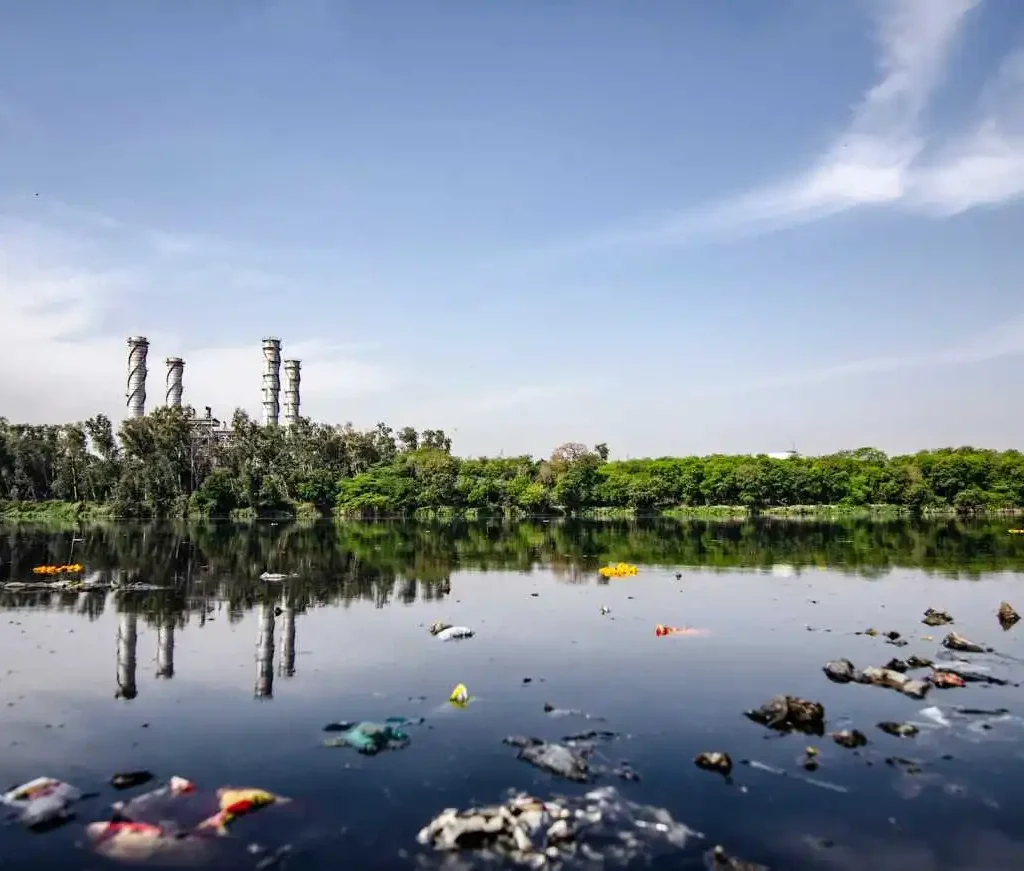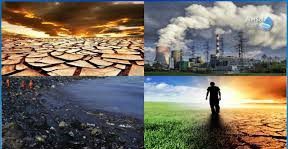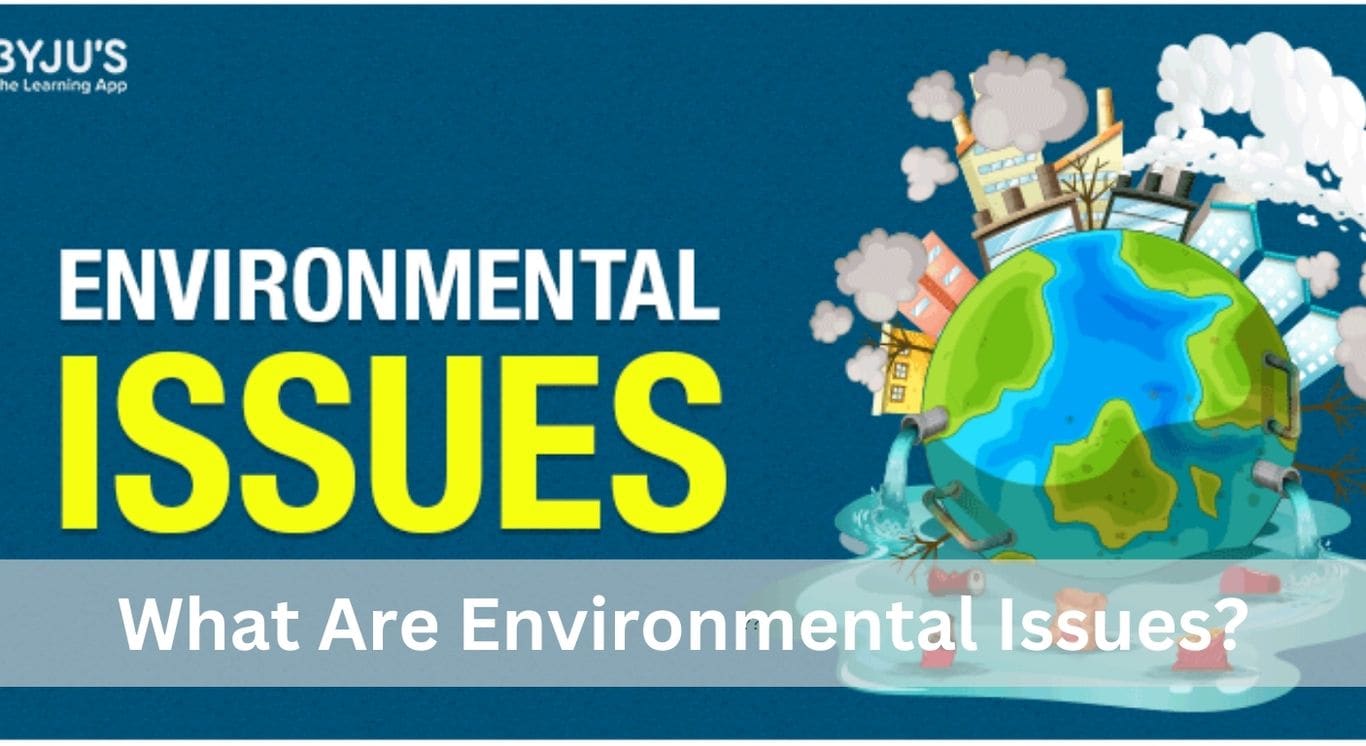Environmental issues affect all and sundry, and I’ve seen firsthand how they affect our communities’ polluted rivers, severe weather, and more. These studies show me the importance of mastering and taking small steps to defend our planet for a more healthy, balanced destiny.
What Are Environmental Issues? (Short answer)
Environmental problems are troubles caused by human sports that harm the planet, like pollutants, climate alterations, and deforestation. These demanding situations disrupt ecosystems, threaten biodiversity, and affect our health. Addressing them calls for sustainable practices and worldwide action.
In this article, we can speak What Are Environmental Issues?
What Are Environmental Issues?
Environmental troubles are demanding situations affecting Earth’s ecosystems, like climate change, pollution, and resource depletion. They rise up from herbal occasions and human sports, impacting biodiversity, health, and companies. Addressing these problems requires sustainable practices and worldwide cooperation.
What Are The Main Types Of Environmental Issues?
The Main Types of Environmental Issues:
- Climate trade
- Loss of biodiversity
- Air pollutants
- Ocean health
- Water pollution
- Overpopulation
- Energy use
- Weather events
Climate Change
Climate change entails long-term shifts in temperature and climate patterns, normally because of human sports like burning fossil fuels. This will increase greenhouse gases, trapping warmth and raising worldwide temperatures. Effects include melting glaciers, growing sea stages, disrupted ecosystems, and excessive climate activities like floods, droughts, and wildfires.
Loss in Biodiversity
It includes a variety of life forms like plants, animals, and microorganisms that play an active role in sustaining ecological harmony by ensuring food availability and regulating the climate. Biodiversity loss in species and disruption in ecosystems are generally caused by human activities like deforestation, pollution, and agriculture. Since 1970, 69% of wildlife populations have been lost worldwide, which endangers the health of our planet.
Atmospheric Pollution
This occurs when toxic substances such as carbon dioxide, methane, and nitrogen dioxide contaminate the air. Major causes: burning fossil fuels, industries, and fire. Respiratory, heart problems, and cancer have been health effects due to this. According to WHO, air pollution causes 4.2 million deaths every year, where individuals die before reaching the age of 70.
Ocean Health
Oceans are one of the largest stores of carbon dioxide, which is mainly why their acidification threatens marine organisms and marine ecosystems. Pollution damages oceans through plastic waste, chemicals, and oil spills, which leads to habitat destruction with a more attached risk to global food security. Sea levels rise, thus heavy flooding and erosion along coasts.
Pollution of Water

Water pollution is that which, in common terms, affects all sources of water, affecting oceans. It’s coupled with freshwater sources, water that might be safe, drinkable, and therefore essential to health. Falling short of safe water for drinking causes diseases, and all the wastewater that discharges from industries, pesticides, and chemicals all cause water pollution. As water becomes more and more compromised from the effects of climate change, two-thirds of the world’s population may enter a water scarcity situation by the year 2025.
Overpopulation
9.7 billion is the anticipated growth in the world population by 2050, thus increasing the demand for natural resources. If there is no good alternative to sustainable practices, then this overpopulation may create a shortage of food and water supply besides waste management problems, pollution, and deforestation that will have to contend with significant environmental and public health threats.
Energy Use
Fossil fuels primarily use the source of energy that has resulted in greenhouse emissions and environmental degradation, such as acid rain. Renewable energy sources such as solar, wind, and hydro also reduce carbon emissions, but their environmental impact cannot be underestimated.
Weather Events
Extreme weather events such as hurricanes, floods, wildfires, and droughts are becoming increasingly common, indicated by their severity due to climate change. They have effects on the environment and are capable of wreaking havoc on human populations, causing significant losses and damage to the economy. Extreme weather events accounted for 2 million deaths and caused damages of $4.3 trillion between 1970 and 2021, according to the World Meteorological Organization.
How Are People and Organizations Addressing Environmental Issues?
Numerous ways have been undertaken by people and organizations to address environmental issues such as:
Research and Education: With education and technological advances, include the knowledge of environmental impacts and the benefits of sustainable practices into curricula.
International Cooperation: The cooperation is through international agreements, such as the Paris Agreement, and resource sharing with such global endeavors to combat the environmental problem dynamics.
Corporate Responsibility: Organizations do take a step towards the changes, such as the businesses to include sustainability practices, thereby lessening emissions as well as encouraging more transparent reporting about environmental impacts.
Solutions to Environmental Issues
This is how one would solve the environmental problems:
- Go reusable instead of using disposable items to minimize waste.
- Reduce paper use by going digital, encouraging resource conservation.
- Save water and power to conserve resources from depletion.
- Adopt energy-saving measures and conditioning practices, such as recycling and reducing carbon.

Define Pollution
Pollution is defined as the act of introducing harmful substances or jittering materials into the environment, from where they tend to have adverse effects on healthy ecosystems and people’s health, as well as the quality of life.
Define Pollutants
Pollutants are defined as those substances or forms of energy that enter the environment and cause adverse effects and harm to a resource. For example, harmful gases or smoke in the air may cause air pollution and thereafter harm health and the environment.
Diseases caused by pollution are:
- Air Pollution: Asthma and lung cancer.
- Water Pollution: Diarrhea and cholera.
- Noise Pollution: Hearing problems and hypertension.
Define the Ozone Layer. Why Is The Ozone Layer Getting Depleted At A Higher Level Of The Atmosphere?
The ozone layer is a region in Earth’s stratosphere that absorbs most of the Sun’s harmful ultraviolet (UV) radiation. It has a high concentration of ozone that shields life on Earth from harmful UV rays.
The ozone layer is getting depleted at higher levels of the atmosphere due to the release of chlorofluorocarbons (CFCs) and other ozone-depleting substances, which break down ozone molecules, reducing its ability to filter UV radiation.
What Are The Consequences Of Deforestation?
The consequences of deforestation include loss of biodiversity, increased greenhouse gas emissions, disruption of the water cycle, soil erosion, and a decrease in the natural beauty of the environment.
FAQ,s
1. What Are The 5 Major Environmental Issues?
- Climate Change
- Air Pollution
- Deforestation
- Water Pollution
- Loss of Biodiversity
2. What Is The Environmental Issue?
An environmental issue refers to challenges impacting the natural world, such as pollution, climate change, and habitat destruction.
3. What Is An Example Of An Environmental Issue?
An example is plastic pollution, which affects oceans, wildlife, and ecosystems.
4. What Are The 4 Major Issues Affecting Today’s Environment?
- Climate change
- Deforestation
- Air pollution
- Waste management
5. What Are The 5 Major Environmental Problems?
- Global warming
- Resource depletion
- Habitat destruction
- Overpopulation
- Water scarcity
6. What Are Environmental Issues for Students?
Issues like waste management, energy conservation, and environmental education.
7. What Are Environmental Issues In The World?
Issues such as pollution, deforestation, and climate change affect ecosystems globally.
8. What Are Environmental Issues Today?
Problems like air and water pollution, loss of biodiversity, and rising global temperatures.
Conclusion
Environmental issues are complex challenges that arise from human activities and natural changes, impacting the health of our planet. Issues such as climate change, pollution, deforestation, and loss of biodiversity pose significant risks to ecosystems, wildlife, and human well-being.
By understanding and addressing these challenges through sustainable practices, education, and global cooperation, we can work towards a healthier, more balanced relationship with our environment for future generations.


